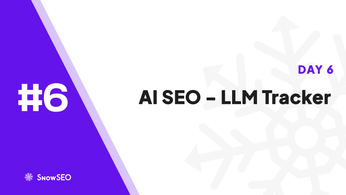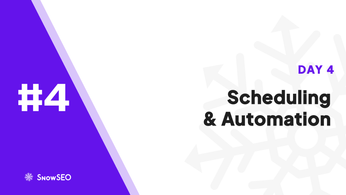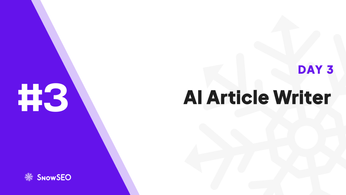
Scaling Your SEO: Tools vs Strategies Guide
Table of Contents
If organic traffic were a stock, it would be the one asset every growth-minded brand scrambles to buy while the price is still right. Yet the moment most teams try to “scale SEO,” they hit a familiar wall: tools everywhere, strategy nowhere. Slick dashboards promise effortless rankings, while consultants insist that mindset beats software every time. The result? Bloated tech stacks, fragmented workflows, and pages that rank somewhere between “barely visible” and page 10.
This guide tackles that disconnect head-on. We’ll break down the exact point where relying on automation alone stalls progress, show you when hands-on strategic thinking delivers higher ROI than yet another subscription, and map out a framework that blends the best of both worlds. You’ll see how to:
- Pinpoint which SEO tasks must be systematized versus which demand human nuance.
- Evaluate new tools using outcome-based scoring, not shiny-feature syndrome.
- Build an iterative strategy that scales with traffic targets and team capacity.
Our playbook is distilled from two decades of working with enterprise brands, venture-backed startups, and agencies that manage thousands of URLs per client. We’ve lived the spreadsheet chaos, audited the tech stacks, and reverse-engineered the campaigns that turned rankings into revenue. By the end of this article, you’ll not only know which levers to pull-you’ll understand why they move the needle, and how to keep them moving as your site grows.
You’ve just invested several minutes weighing the pros and cons of scaling with more SEO tools versus doubling down on strategy. Now it’s time to turn that insight into momentum. SnowSEO makes the next step effortless. Instead of juggling five different platforms to cover keyword research, content production, rank tracking, and AI-driven SERP visibility, you can centralize everything in one intuitive dashboard. Imagine pulling a single report on Monday morning that tells you which keywords are slipping in Google, which competitors are outranking you in ChatGPT suggestions, and which blog posts need refreshing-then triggering automated content updates with one click. That’s the SnowSEO experience in action.
Here’s how it bridges the gap between theory and execution:
- Translate strategy into tasks: You’ve identified gaps in topical authority and internal linking. SnowSEO’s Gap Finder maps every missing subtopic, autogenerates briefs in your brand voice, and schedules drafts directly inside your CMS.
- Replace tool fatigue with unified data: No more exporting CSVs from a keyword tracker, pasting them into a content calendar, and hoping your writers notice. SnowSEO consolidates SERP, AI-SERP, and geo-rank data so every stakeholder sees the same live metrics.
- Automate human-quality content: Our AI writers are trained on conversion-optimized patterns, so each article feels handcrafted-not robotic-and aligns with the strategic frameworks you just read about.
- Keep pace with algorithm shifts: Whether Google rolls out a core update or ChatGPT tweaks its citation policy, SnowSEO’s 24/7 monitoring alerts you instantly and suggests fixes before ranking losses snowball.
Ready to move from reading about scalable SEO to actually doing it? Take these three quick actions now:
- Visit snowseo.com and start a free 14-day pilot. You’ll get full access to keyword discovery, AI content generation, and performance dashboards-no credit card required.
- Book a 20-minute strategy call with a SnowSEO growth engineer. Bring your current stack and traffic goals, and we’ll map out how to consolidate redundant tools, cut costs, and accelerate wins.
- Import one existing URL into the “Boost” feature. Within minutes you’ll see personalized recommendations for schema, internal links, and AI snippet optimization-then watch rankings climb over the next reporting cycle.
Scaling your SEO shouldn’t require scaling your headaches. SnowSEO turns the principles you’ve just learned into a repeatable, automated workflow that frees your team to focus on creative strategy while the platform handles the heavy lifting. Say goodbye to scattered data, exorbitant tool bills, and content that never quite lands. Say hello to unified insights, hyper-personalized content, and faster organic growth-everything you need to own the SERP and the AI answer box alike. Start your SnowSEO trial today and let your strategy outpace the competition while the platform does the legwork.
Frequently Asked Questions
Q1: Why should an in-house SEO team balance tools with strategy instead of relying on one or the other?
Tools speed up auditing, research, and reporting, but they can’t think critically, interpret brand nuances, or prioritize trade-offs the way a strategist can. When you lean exclusively on software, you often end up with surface-level optimizations: fixing meta tags, adding keywords, and chasing every “error” the crawler flags. Meanwhile, deeper growth levers-such as aligning content with customer empathy maps, earning authority backlinks through thought leadership, or structuring information architecture around user journeys-get sidelined. A strategic mindset ensures every technical tweak ladders up to commercial goals, protects brand voice, and allocates resources where they move revenue needles, not vanity metrics. Pairing both means you automate repetitive tasks (log-file parsing, large-scale redirects, rank monitoring) while freeing brainpower for creative campaigns and cross-department collaboration. The result is an SEO program that scales efficiently without losing the human judgment that separates average traffic from bottom-line impact.
Q2: How do I decide which SEO tasks to automate and which to keep manual as we scale?
Start by mapping your workflow into three buckets: repetitive, interpretive, and innovative. Repetitive tasks-like bulk metadata generation, weekly position tracking, and internal link audits-are perfect candidates for automation because they follow clear rules and consume hours without adding strategic value. Interpretive tasks, such as competitor gap analyses or content brief creation, may use tools for data collection but still need human review to set priorities and angles. Innovative tasks-storytelling, stakeholder education, and testing new schema types-should remain manual, as they rely heavily on creativity and cross-discipline knowledge. Next, quantify time spent per task versus its direct contribution to revenue or lead gen. Automate any low-value, high-time activity, then reinvest the saved hours into high-impact manual work. Revisit this matrix quarterly; as your tech stack evolves, items may migrate between buckets. This disciplined approach prevents shiny-object overload while ensuring your team’s expertise propels long-term wins.
Q3: What’s the most common pitfall when scaling SEO with multiple tools across international markets?
Fragmented data governance. When each regional team picks its own crawler, rank tracker, or CMS plug-in, you quickly end up with inconsistent KPIs, conflicting dashboards, and redundant subscription costs. This fragmentation makes it nearly impossible to benchmark performance across locales, dilutes learnings, and can even create compliance risks if personal-data handling varies. Avoid the trap by setting a global tool stack policy that specifies approved platforms, data taxonomy, and reporting cadences. Allow limited flexibility for market-specific features, but mandate centralized data warehousing so every analyst pulls from one source of truth. Establish role-based permissions, drive periodic tool training in regional time zones, and include a feedback loop for local teams to suggest enhancements. A unified ecosystem doesn’t just cut expenses; it fuels knowledge sharing-so technical breakthroughs discovered in, say, the DACH region can be replicated swiftly in APAC, compounding ROI for the entire organization.
Q4: How can we prove the ROI of strategy-heavy initiatives, like content hubs or entity mapping, to budget holders who prefer quick wins?
First, align your proposal with business metrics the C-suite already tracks-customer acquisition cost, average order value, or subscription retention-rather than traditional SEO proxies alone. Build a forecast model that shows how a topic cluster or entity-based content architecture can capture incremental non-brand traffic, improve internal linking depth, and reduce paid search dependence. Then layer in qualitative evidence: demonstrate how authoritative content shortens sales cycles by answering objections pre-call, or cite past case studies where brand perception improved post-hub launch. Use test-and-learn roadmaps: pilot one high-value cluster, measure assisted conversions and engagement lift, and extrapolate realistic growth curves. Finally, showcase opportunity costs: ignoring strategic groundwork today means paying a compound “catch-up tax” later when competitors dominate semantic SERPs. This mix of projected revenue, empirical micro-tests, and risk framing turns abstract strategy into tangible financial language executives can champion.
Q5: What governance framework keeps SEO tools from overlapping and wasting budget as our martech stack expands?
Adopt a three-layer governance model: ownership, evaluation, and sunset. Ownership assigns a responsible stakeholder-usually a platform lead or product manager-who tracks licenses, usage analytics, and renewal dates. Evaluation sets bi-annual performance reviews where stakeholders score each tool on adoption rate, data accuracy, support quality, and ROI against pre-defined OKRs. Sunset outlines clear criteria for decommissioning: low utilization, feature redundancy, or inability to integrate with core BI systems. Document findings in a shared inventory spreadsheet that includes contract terms and cost centers. Couple this with a procurement policy requiring new tool requests to submit a gap analysis and demo trial benchmarks. By turning tool management into a living process rather than ad-hoc decisions, you reduce shadow IT spend, negotiate better enterprise deals, and maintain a lean, purpose-built tech stack that scales logically with organizational maturity.
Q6: How do we maintain consistent on-page quality when hundreds of new pages are generated by product feeds or user-generated content?
Implement a layered quality-assurance approach. First, build templated components-title tags, meta descriptions, header hierarchies, and structured data snippets-that dynamically pull key attributes while enforcing length limits and keyword variants. Second, introduce validation gates in your CMS or PIM so pages cannot publish unless critical fields meet set quality thresholds. Third, schedule periodic crawler audits focusing on thin-content ratios, duplicate clusters, and missing schema. Complement these with server-side log analysis to flag orphan URLs that slip through. Fourth, deploy machine-learning classifiers to prioritize human review where algorithmic signals indicate potential E-E-A-T gaps or brand-sensitive language. Finally, provide ongoing editor training and create a feedback loop so common template pitfalls are rectified across the entire inventory. This multi-pronged system allows velocity without sacrificing the human touch that users-and search engines-expect from authoritative, trustworthy content.
Q7: What KPIs best capture the combined impact of tools and strategic initiatives rather than measuring them in silos?
Focus on holistic, outcome-oriented metrics that span the entire funnel. Examples include:
- Organic revenue contribution as a percentage of total digital sales.
- Assisted conversion value segmented by content type or topical hub.
- Share of voice for priority keyword groups relative to competitors.
- Crawl efficiency ratio (crawl budget spent on indexable pages).
- Average time-to-implementation for technical fixes surfaced by tools.
Pair these with leading indicators-content velocity, backlink acquisition pace, or schema coverage-to spot momentum shifts early. Importantly, visualize KPI relationships in a single dashboard. For instance, correlate improved crawl efficiency with changes in share of voice and, ultimately, revenue. This integrated view highlights how tactical automation (faster fixes) amplifies strategic plays (better visibility), reinforcing the necessity of both. Review monthly, discuss cross-functionally, and iterate targets so your team remains agile yet accountable.
Q8: How can smaller agencies compete with enterprise budgets when scaling SEO efforts?
Leverage agility and specialized expertise. Smaller teams can pivot faster, tailor outreach, and integrate emerging SERP features (like AI-generated overviews) without bureaucratic lag. Focus on niche verticals where deep domain knowledge beats generic campaigns, and package service bundles-technical audits plus content strategy plus digital PR-that solve holistic problems enterprises often approach piecemeal. Embrace cost-effective open-source tools and APIs, layering custom scripts to replicate enterprise functionality without heavy license fees. Position transparency and founder-level access as value props: clients often trade size for direct strategic guidance. Finally, cultivate partnerships-martech vendors hungry for case studies will extend discounts or co-marketing. By marrying hyper-focused strategy with lean technology, smaller agencies punch above their weight and deliver performance metrics that rival larger competitors at a fraction of the overhead.
Q9: What’s the most effective way to integrate AI-driven content generation without risking duplicate or low-quality output?
Treat generative AI as a drafting assistant, not a publishing shortcut. Start with a proprietary knowledge base: upload brand guidelines, product specs, and past high-performing articles to fine-tune models so prompts generate on-brand, factual drafts. Next, establish a human-in-the-loop editorial workflow: editors review AI output for accuracy, add original insights, and blend quotes or data unique to your organization. Implement plagiarism and compliance checks before content enters the CMS. Use AI strengths-pattern recognition, variant brainstorming-for meta descriptions, FAQ ideas, and localized language adaptation, while reserving thought leadership and complex storytelling for seasoned writers. Track performance differentially; compare AI-assisted pages against fully manual ones on engagement and conversion to refine processes. By coupling controlled datasets, human oversight, and metric-based iteration, you harness AI’s scale without sacrificing authenticity or search trust.
Q10: How often should an established site revisit its overarching SEO strategy in a rapidly evolving SERP landscape?
Quarterly light reviews with a comprehensive overhaul every 12-18 months strikes the right balance. In the quarterly sessions, audit algorithm updates, competitor movements, and new SERP features-think AI snapshots or interactive FAQs-to adjust priorities and quick wins. Save structural shifts, like re-architecting content clusters or migrating to a headless CMS, for the annual deep dive when you have time for stakeholder buy-in and resource alignment. Between cycles, maintain an evergreen test-and-learn backlog: launch micro-experiments (e.g., different schema types, internal link patterns) and feed results into the next strategic refresh. Document findings in a living playbook so institutional knowledge survives personnel changes. This cadence keeps your strategy responsive to external changes while protecting teams from constant pivots that dilute focus. Over time, the organization develops a rhythm-listen, adapt, execute-that turns volatility into a competitive advantage rather than a disruptor.
Conclusion
Scaling SEO is ultimately a balancing act between the precision of tools and the vision of strategy. Our comparison showed that:
- Automation accelerates data gathering, auditing, and reporting, freeing teams to focus on creative problem-solving.
- Strategic frameworks such as topic clustering, E-E-A-T reinforcement, and intent mapping turn raw data into sustainable growth.
- Hybrid workflows beat tool-only or strategy-only approaches by pairing machine efficiency with human insight.
- Measurement matters: the strongest programs align metrics with business objectives, not vanity rankings.
- Process documentation and cross-functional collaboration reduce scaling friction as teams, budgets, and website footprints grow.
Key insight: investing in advanced tools without an equally mature strategic roadmap is the fastest way to create technical debt rather than traffic wins.
So where should you go from here? First, audit your current stack to identify feature overlap and cost leakage; every unused crawler log or keyword seat is budget you can reallocate. Next, map that lean toolset to a 12-month roadmap that prioritizes high-intent content, technical hygiene, and authority building. Finally, schedule quarterly retrospectives to test, learn, and recalibrate before algorithm shifts force a reactive scramble.
By treating technology as an enabler rather than a crutch, you position your team to move faster than updates, competitors, and market volatility-transforming SEO from a collection of tactics into a durable growth engine.





